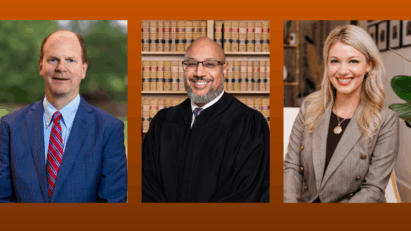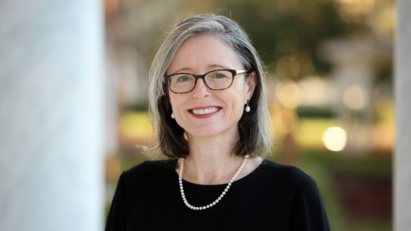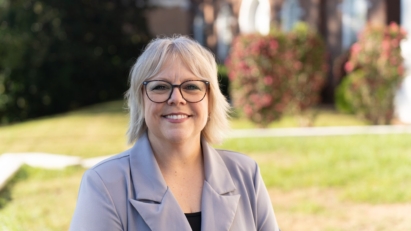Students visit the three Equal Justice Initiative sites in Montgomery, Alabama
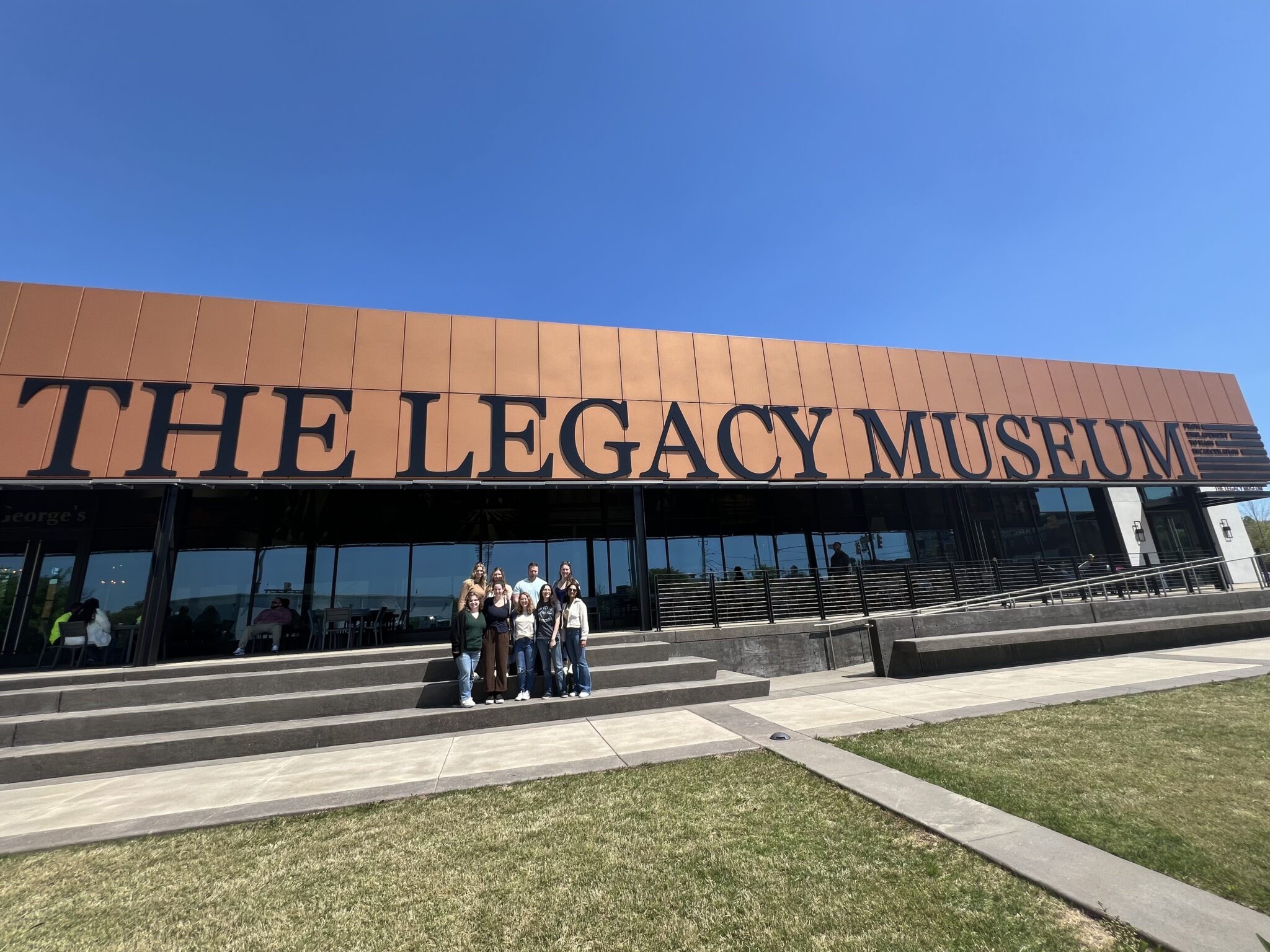
As a third year student at Mercer Law in 2019, Meagan Hurley, a participant in both the Habeas Project and the Public Defender Clinic, had an experience that affected her so completely that it affirmed for her the significance of the work she wanted to do as an attorney. “The experience deeply impacted me as a human being and as a then-future lawyer. It was intense, important, and inspiring.” Four years later, when she came back to Mercer Law as an assistant professor teaching criminal law and the Habeas Project, she knew she would offer the same inspiring experience to her students.
According to Hurley, Bryan Stevenson, one of the most famous human rights lawyers in the world, is the executive director of the Equal Justice Initiative (EJI) in Montgomery, Alabama – a nonprofit law office that works toward criminal justice reform and racial justice by representing persons unjustly convicted or sentenced across the deep South. The EJI also seeks to educate the public about the connection between slavery and racial terror in the United States to mass incarceration. In 2018, as part of those efforts, Stevenson opened the first two of three “Legacy Sites” – the Legacy Museum: from Enslavement to Mass Incarceration, and the National Memorial for Peace and Justice. In 2024, the EJI also opened the Freedom Monument Sculpture Park.
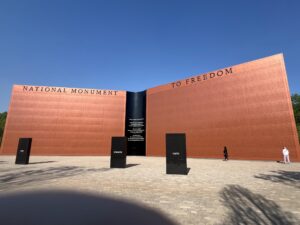 On April 5th, Hurley and her Habeas Project students visited the three sites. It was Hurley’s first time visiting the Freedom Monument Sculpture Park, as it had just opened a few weeks before. But it was her third time visiting the Legacy Museum and the Memorial, which included a trip with her family the day she was sworn into the Alabama Supreme Court in 2019. Before moving back to Macon, Hurley served as a post-conviction defense attorney for the Georgia Innocence Project in both Georgia and Alabama.
On April 5th, Hurley and her Habeas Project students visited the three sites. It was Hurley’s first time visiting the Freedom Monument Sculpture Park, as it had just opened a few weeks before. But it was her third time visiting the Legacy Museum and the Memorial, which included a trip with her family the day she was sworn into the Alabama Supreme Court in 2019. Before moving back to Macon, Hurley served as a post-conviction defense attorney for the Georgia Innocence Project in both Georgia and Alabama.
Hurley explained that students in the Habeas Project, Mercer Law’s nationally recognized post-conviction defense legal clinic established in 2006, represent indigent people that the group has determined through records review and investigation were wrongfully or unjustly convicted, and they work to obtain post-conviction relief on their behalf. The Project has handled dozens of cases pending before the Georgia Supreme Court and various Georgia Superior Courts in matters in which convicted individuals no longer have the right to appointed counsel. In the clinic, Hurley supervises student case work and mentors in all aspects of representation: client visits, investigation, case planning, brief drafting, and preparing for oral arguments and evidentiary hearings.
“It is our job to get to know and understand who our clients are and what their cases are about, from a legal and factual standpoint, so that we can assess how best to help them. In the clinic, all our clients are indigent, and almost all of them live in prison. Consistent with incarceration data in the United States, most of our clients are also Black and Brown people, despite the fact that Black and Brown people make up a relatively small portion of the overall population. That’s not a coincidence. In order to bring about positive change and provide effective advocacy for our clients, we have to be able to understand and acknowledge the problems facing the criminal legal system – including the role of race discrimination in it – and how those problems came to be. Much of the issues the EJI works to educate the public about through the Legacy Sites are issues that are undeniably present and prevalent in our cases, in our society, and in our legal system. I want the students to understand that, to think about it critically, and to be inspired to work toward a more fair and just future for all people.”
 Habeas Project student Grace Elizabeth Townsend,’24, said that visiting the Legacy Sites and seeing the extent of the egregious treatment towards the Black community throughout history put everything in a whole new light for her. “We learn about the nation’s misconduct throughout our education, starting in elementary school, but visiting the museums really shed light on the magnitude of this blatant mistreatment and the overall horrendous history. Words cannot encapsulate the depth of knowledge gained from attending these museums.”
Habeas Project student Grace Elizabeth Townsend,’24, said that visiting the Legacy Sites and seeing the extent of the egregious treatment towards the Black community throughout history put everything in a whole new light for her. “We learn about the nation’s misconduct throughout our education, starting in elementary school, but visiting the museums really shed light on the magnitude of this blatant mistreatment and the overall horrendous history. Words cannot encapsulate the depth of knowledge gained from attending these museums.”
Hurley hopes her students were able to see how many of their clients’ cases and lives have been shaped by the issues underlying mass incarceration in the United States. She hopes they can better understand the lasting impact of racial injustice on our criminal legal system. “I hope the connections they were able to draw motivate them to educate those around them – including through their client advocacy. That’s how change happens – one person at a time.”
Habeas Project student Valerie Jane Pallos, ’25, said the trip was incredibly moving, profound, and heavy as it revealed the heartbreaking realities endured by those trapped within institutional injustice. “Visiting the sites brought my deepest fears, concerns, and aspirations to life. I often found myself questioning the possibility of a more just and equitable criminal legal system after centuries of oppression. Yet, by the end, I realized how many times I had read the simple phrase ‘with hope’ in various spots throughout the Legacy Museum. That realization sparked my own sense of hope that, with the zealous advocacy of compassionate leaders, the war on justice can still be fought. To say [the Legacy Sites] ignited my passion and purpose to be a zealous and compassionate advocate for underrepresented communities oppressed by the criminal legal system would be an understatement.”
Sarah Gerwig, professor of law and director of experiential education, also recognized the power of introducing her Public Defender Clinic students to the immersive journey through the civil rights museums. Gerwig visited the Legacy Museum and the Memorial for the grand opening celebration in 2018 and took a group of students later that year. She took another group in 2019, which included Hurley, and another trip this Spring.
Students in the Public Defender Clinic appear in court at hearings and trials on behalf of indigent clients. Students assist in the representation of clients of the local public defender office in all aspects of representation, including fact investigation, witness interviewing, legal research and drafting, and preparing cases for trials and hearings.
Gerwig said that in the Public Defender Clinic, students are working with poor people accused of crimes—many of whom are people of color. “It’s impossible after doing this work, not to see the connections between racial injustice, poverty, and the criminal law. The EJI is a brilliant organization taking on litigation that affects our clients – but it has also taken the lead in research tying together threads of history to issues we see in the present. It’s important for my students to see this as we wrap up our work together.”
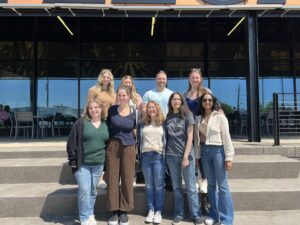 Ana Muñoz, ’24, also a member of the Habeas Project, said, “As a future lawyer, this experience inspired me to speak more about injustice in our system even when it seems hopeless, to not become complacent with how the system is and to seek change, and to help everyone the best I can in whatever type of law I do. It was an incredible experience.”
Ana Muñoz, ’24, also a member of the Habeas Project, said, “As a future lawyer, this experience inspired me to speak more about injustice in our system even when it seems hopeless, to not become complacent with how the system is and to seek change, and to help everyone the best I can in whatever type of law I do. It was an incredible experience.”
